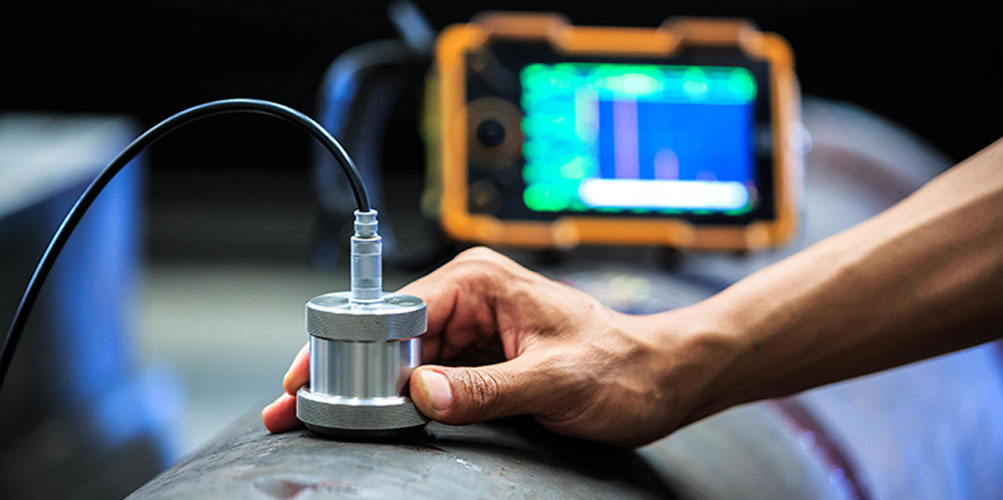In industries where safety, reliability, and quality are non-negotiable, Non-Destructive Testing (NDT) plays a vital role. Whether you’re inspecting pipelines, aircraft components, or welded structures, NDT allows you to evaluate materials without causing damage — making it a critical technique across engineering, manufacturing, and construction sectors.
In this guide, we’ll break down what NDT is, its methods, applications, benefits, and the industries that depend on it.
What Is NDT?
NDT stands for Non-Destructive Testing, a group of analysis techniques used to evaluate the integrity, properties, and defects of materials or components without altering or damaging them.
Definition:Non-Destructive Testing (NDT) refers to a range of inspection methods used to assess material properties, flaws, or structural integrity without affecting the item being tested.
This makes NDT ideal for quality control, safety assurance, and maintenance inspections, especially where downtime and rework are costly or dangerous.
Key NDT Methods
Here are the most commonly used types of Non-Destructive Testing:
Ultrasonic Testing (UT)
- Uses high-frequency sound waves to detect internal flaws.
- Common in weld inspections and thickness measurements.
Radiographic Testing (RT)
- Uses X-rays or gamma rays to view internal structures.
- Suitable for detecting cracks, voids, or inclusions in metal components.
Magnetic Particle Testing (MT)
- Detects surface and near-surface discontinuities in ferromagnetic materials.
- Uses magnetic fields and iron particles to highlight defects.
Liquid Penetrant Testing (PT)
- Uses dye or fluorescent liquid to identify surface cracks or leaks.
- Often used in aerospace, automotive, and fabrication.
Eddy Current Testing (ECT)
- Uses electromagnetic induction to detect flaws in conductive materials.
- Effective for surface crack detection and conductivity measurements.
Visual Testing (VT)
- The most basic and widely used form of NDT.
- Involves direct or remote visual inspection with the naked eye or instruments.
Where Is NDT Used?
NDT is essential in industries where failure could result in major safety risks or financial loss, including:
IndustryCommon ApplicationsAerospaceAircraft component inspections, fatigue cracksOil & GasPipeline integrity, weld verificationConstructionBridge and building inspectionsManufacturingQuality assurance in metal and plastic partsPower GenerationBoiler tube inspections, turbine bladesRailwaysTrack and wheelset integrity monitoringBenefits of Non-Destructive Testing
Non-Destructive Testing offers numerous advantages:
- Preserves integrity of the material being tested
- Reduces downtime by avoiding disassembly
- Cost-effective in long-term maintenance and quality control
- Improves safety by catching defects early
- Supports compliance with industry standards and regulations
NDT helps companies avoid catastrophic failures, maintain high product quality, and stay competitive in highly regulated environments.
NDT Certifications and Standards
To ensure testing accuracy and safety, NDT is governed by international standards and certifications:
- ASNT (American Society for Nondestructive Testing)
- ISO 9712 – International qualification and certification of NDT personnel
- NAS 410 – Aerospace NDT standard
- API Standards – For oil & gas pipeline and refinery inspection
Professionals must undergo specialized training and pass exams to be certified in various NDT methods.
Future of NDT: Trends to Watch
- AI and machine learning for defect recognition
- Remote inspections using drones and robotics
- Digital radiography and real-time imaging
- 3D scanning for advanced flaw detection
- Integration with IoT and predictive maintenance systems
The future of NDT is heading toward greater automation, real-time reporting, and data-driven decision-making.
Conclusion
Non-Destructive Testing (NDT) is a cornerstone of modern industry. By enabling the inspection of materials and structures without causing damage, it ensures safety, reliability, and efficiency across critical sectors.
Whether you’re inspecting aircraft engines, oil pipelines, or construction welds, NDT helps detect problems before they become disasters — making it a must-have in any quality assurance or safety program.
FAQs
1. What does NDT stand for?
NDT stands for Non-Destructive Testing — a method of inspecting materials and components without causing damage or altering their integrity.
2. What are the most common NDT methods?
Ultrasonic testing, radiographic testing, magnetic particle testing, liquid penetrant testing, eddy current testing, and visual inspection are the most widely used.
3. Which industries use NDT?
NDT is used in aerospace, oil and gas, manufacturing, construction, power generation, and railways — anywhere structural integrity is critical.
4. Is NDT safe?
Yes, NDT methods are designed to be non-invasive and are safe for both the material and the operator, especially with proper training and protective equipment.
5. How do you become certified in NDT?
You can become certified through organizations like ASNT or via ISO 9712 by completing required training hours, passing exams, and gaining field experience.

